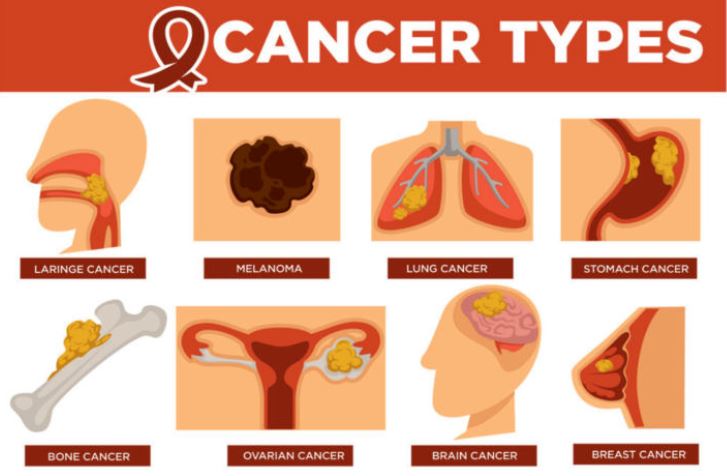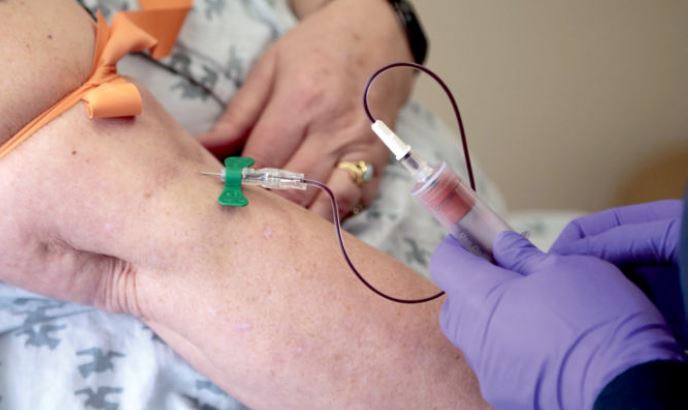
Reproductive cancers are cancers that are in the organs related to reproduction. The most common reproductive cancers in women are:
- Cancer of the cervix: the lower end of the uterus that extends to the vagina.
- Ovarian cancer: Cancer in the ovaries, the two organs that make female hormones and produce a woman’s eggs.
- Uterine cancer: Cancer in the uterus (womb), the organ where the baby grows when a woman is pregnant.
- Vaginal cancer: Cancer of the vagina, the hollow channel that leads from the uterus and cervix to the outside of the body.
- Vulvar cancer: Cancer of the vulva, the area around the opening of the vagina.
- Breast cancer: It is sometimes considered reproductive cancer. Breast cancer is in the tissues of the breast.
What are the symptoms of these cancers?
It is important to recognise these symptoms early and inform your health care provider

What are the risk factors?
A risk factor is a chance that something will harm or otherwise affect a person’s health. There are different risk factors that can increase the chances of developing female reproductive cancers. Having a risk factor does not mean that you will develop cancer. Some risk factors cannot be changed, such as age, family history, and one’s genetic makeup, while others are related to factors in the environment that may cause cancer. Some risk factors can be reduced by changing health habits.
Written below are different risk factors associated with developing certain types of female reproductive cancers.


HPV is a virus that is spread during sexual contact. There are about 40 different strains (types) of HPV that can infect the genital area. About a dozen of these can cause cancer.
There are two types or strains of HPV:
Low-risk strains: Low-risk strains of HPV can cause warts on the genitals. Warts can be itchy, embarrassing, and unpleasant, but these strains are considered low risk because they do not cause cancer.
High-risk strains: High-risk strains do not cause warts but can, rarely, cause cancer. This is why they are called high-risk strains.
Most adults will have an HPV infection at some time during their lives. HPV infections almost always clear up on their own without treatment. A person with a high-risk strain of HPV that does not clear up on its own over many years could eventually get cancer.
How to screen for these cancers?
Annual well-woman visits to a healthcare provider can greatly increase the chances that reproductive cancers are identified early through regular exams and screening tests.
Many times people with early stages of reproductive cancer have no symptoms. A screening test is used to find a disease before the person has any symptoms. There are several screening tests available for some reproductive cancers.
There are screening tests for breast cancer and cervical cancer:
- Mammogram: An X-ray test is used to screen for breast cancer. It is recommended that women between 50 and 74 years old at average risk for breast cancer should get a mammogram every two years. Women who are 40 to 49 should talk to their healthcare provider about when to start and how often to get a mammogram.
- Pap smear (or cervical cytology): A sample of cells is taken from the cervix during a pelvic exam to check for cervical cancer, pre-cancer, and HPV, which is the virus associated with causing most cervical cancers. Beginning at age 21, a woman should have a Pap smear every three years. Beginning at age 30, Pap smears are done along with an HPV test every five years.
There are no screening tests for other reproductive cancers. It is important to see a healthcare provider about any symptoms one experiences. Finding cancers early can help increase the chance that treatment will be successful. Regular exams with a healthcare provider are recommended to help find cancers early, even if there are no symptoms.
Diagnostic tests can be used to find cancers in people who have symptoms. The type of diagnostic test used to find reproductive cancer depends on the type of cancer. These tests include:
- Lab tests: Blood tests that sometimes show signs of cancer.

Tests that help healthcare providers “see” inside the body, such as:
o X-ray.
o Ultrasound.
o MRI scan.
o CT scan.
- Biopsy: Procedure where a healthcare provider removes a small piece of tissue to check for cancer.
How are the reproductive cancers treated?
The treatment depends on the type of cancer. Reproductive cancers are often treated with surgery, chemotherapy (medicine to kill cancer cells), hormone therapy (medicine to block hormones that are related to cancer growth), radiation, or a combination of these used together. An oncologist (cancer doctor) can help you select the best treatment(s) for the specific reproductive cancer.
Because reproductive cancers and their treatment can affect one’s ability to have children one should be sure to talk with the healthcare provider about what can be done if one hopes to have children in the future.
Take Home Message
Take control of your health and reduce your cancer risk
- Stay away from tobacco.
- Get to and stay at a healthy weight.
- Get moving with regular physical activity.
- Eat healthy with plenty of fruits and vegetables.
- Limit how much alcohol you drink (if you drink at all).
- Protect your skin.
- Know yourself, your family history, and your risks.
- Get regular check-ups and cancer screening tests.
- Get your daughters vaccinated against cervical cancer (age 9 – 26 years)
Dr. Rupashree Dasgupta,
MD (Gold medalist from CMC Vellore), DGO (Gold medallist from CMC Vellore), DNB (OG), MNAAMS, Diploma in Advanced Gynae Endoscopy (Germany), Fellowship in Gynae Oncosurgery (Tata Medical Centre, Kolkata), UICC Fellowship in Gynae Onco (London) Sr. Consultant Gynaecologist, Obstetrician and Oncosurgeon Peerless Hospital













